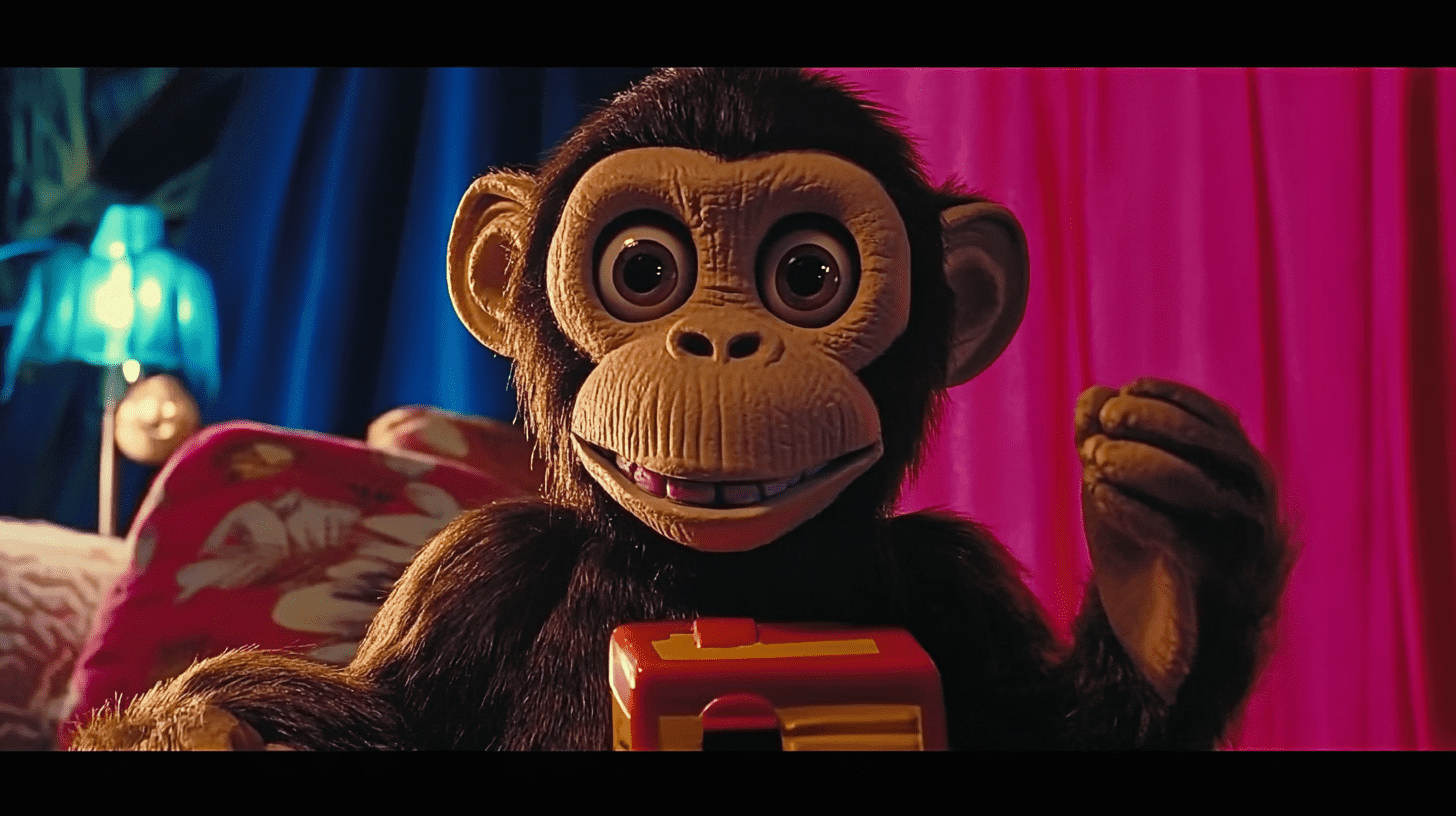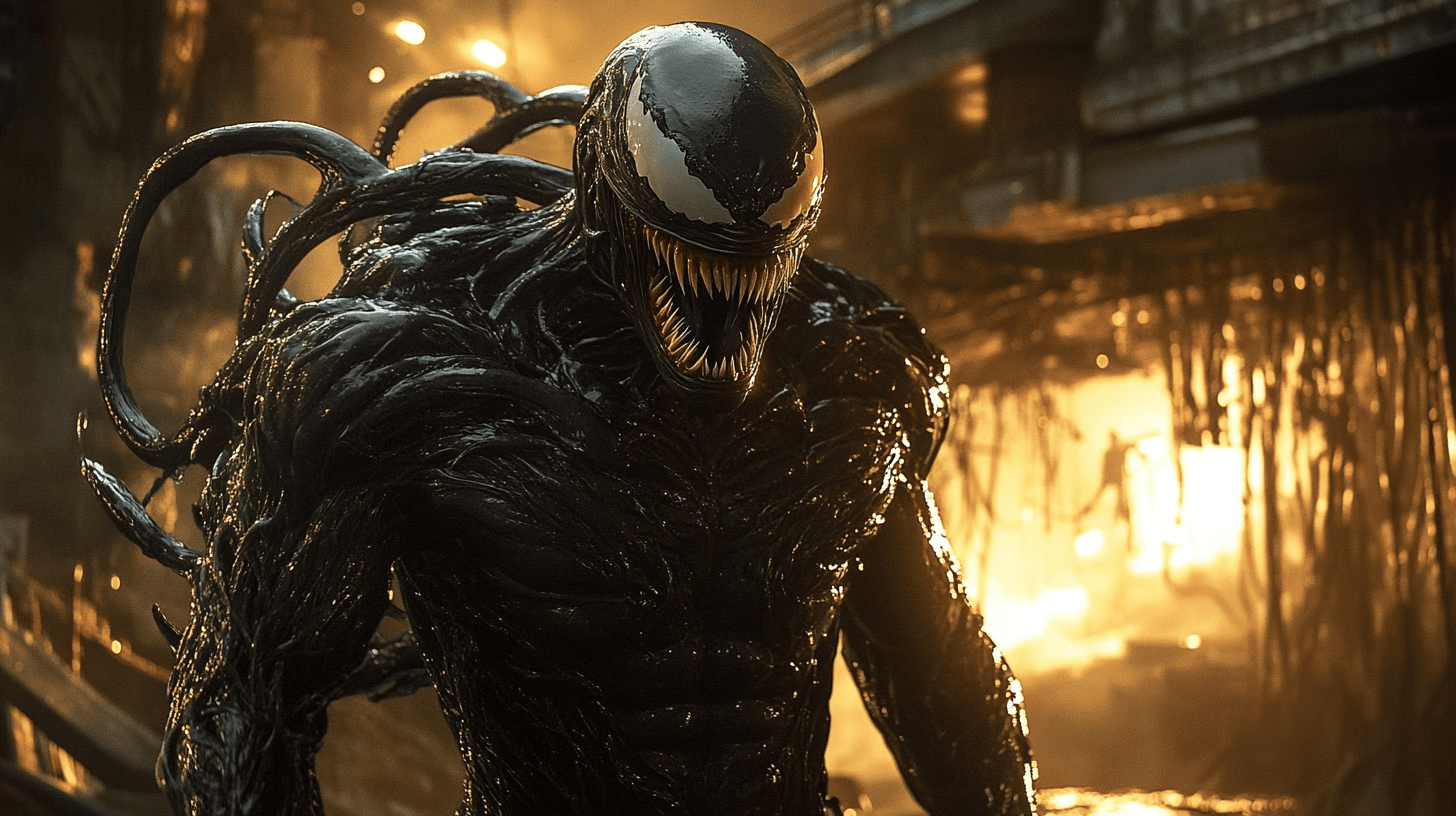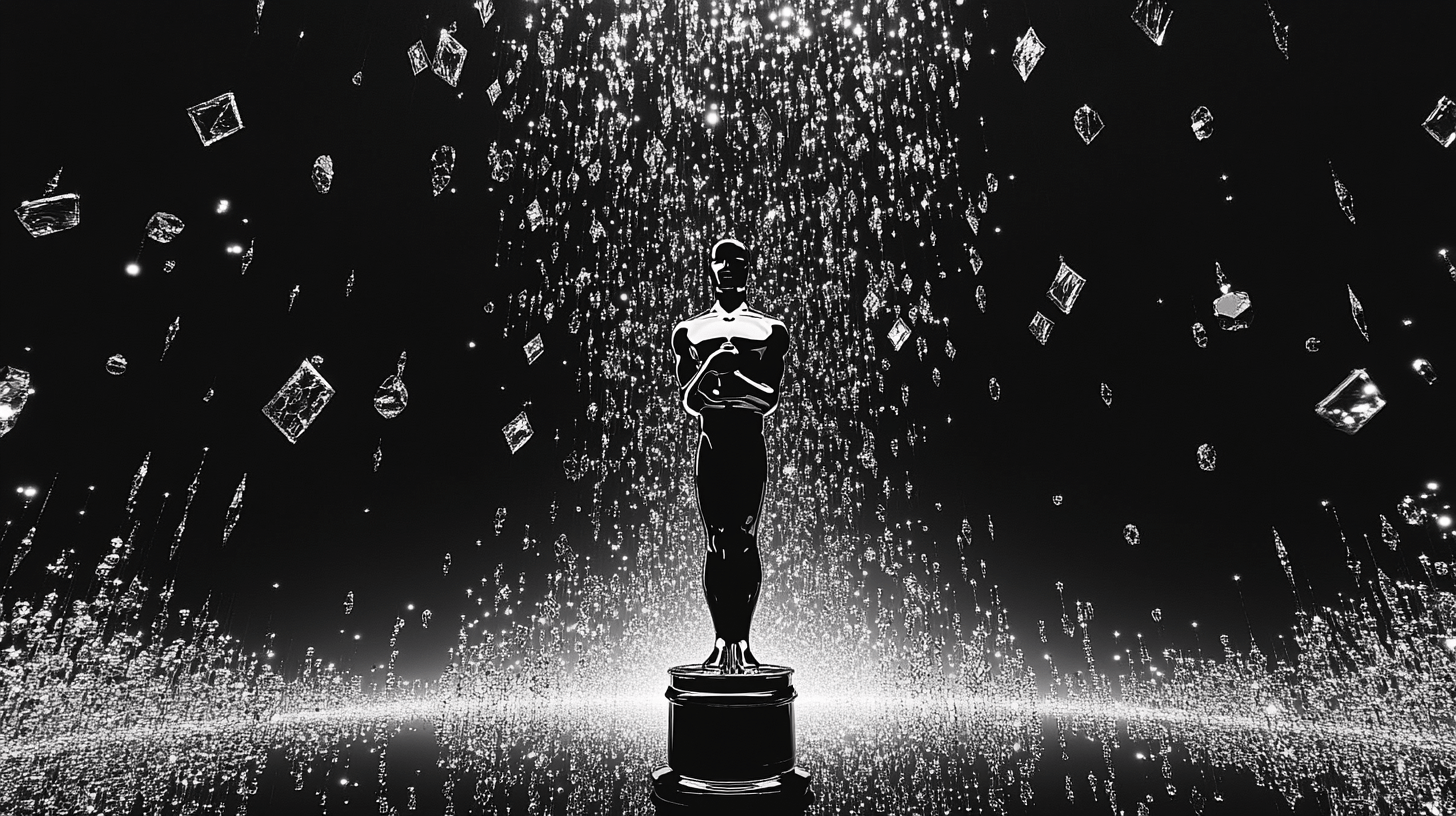Ad Blocker Detected
We use ads to keep this site running, so please consider disabling your ad blocker. Thank you!
Do not know how to disable ad blocker? Check out this article: How to disable ad blocker?
What's After the Blog?
Reviews
The Monkey (2025) Review: An Unsettling Tale of Fate and Fright
Read our in-depth review of The Monkey, a film that challenges expectations with its dark humor and tragic twists. Discover why its unpredictable storyline leaves a lasting impact.
February 21, 2025

Movies mentioned in this article
The Monkey (2025) Review: An Unsettling Tale of Fate and Fright
From its opening scene to its uproariously violent conclusion, The Monkey (2025) is every bit as audacious, unnerving, and darkly comedic as the more out-there Stephen King adaptations we’ve seen over the years. Directed by Osgood Perkins (best known for 2024’s Longlegs), the film combines elements of supernatural horror, gallows humor, and a surprisingly candid commentary on the fragility of life. Loosely based on King’s 1980 short story “The Monkey,” this adaptation replaces measured suspense with over-the-top absurdity, painting a portrait of random tragedy that’s simultaneously gory, hilarious, and strangely poignant.
We’ll break down the film’s premise, performances, and thematic ambitions, while comparing it to other notable horror comedies. We’ll also highlight how The Monkey manages to blend shocking kill sequences and comedic chaos into a story about family trauma, estranged relationships, and our universal inability to control death. If you’re curious to read more, visit the film’s dedicated page on What’s After the Movie—you’ll find a movie summary, quizzes, links to other popular review sites, and more.
Quick Links to Other Movie Info Providers
A Cursed Toy, a Broken Family, and Unpredictable Carnage
The Monkey (2025) wastes no time thrusting you into its bizarre universe. The story opens with airline pilot Petey Shelburn (played by Adam Scott in a brief yet memorable cameo) staggering into a pawn shop, drenched in blood, as he desperately tries to sell a vintage monkey toy. In an instant, Osgood Perkins establishes both the dark comedic tone and the film’s twisted logic. Once the toy’s key is turned, its clockwork drumming unleashes a catastrophic and entirely random death—one that typically unfolds like a macabre Rube Goldberg contraption.
This chaotic introduction references the spirit of the movie: Final Destination style set pieces, amplified by Looney Tunes levels of cartoonish devastation. Just as some reference articles have pointed out, the film hardly takes itself seriously; in fact, its comedic scenes and over-the-top kills are intended to highlight the sheer absurdity of death. Many characters—some crucial, others entirely peripheral—meet their doom in gruesomely innovative ways, and the comedic flair that overlays each demise ensures the film never becomes a dour slog.
After this explosive opener, we learn how this cursed toy—originally discovered by Petey’s twin sons, Hal and Bill—has marred their childhood, carving a rift that drives them apart for decades. By the time we rejoin them in adulthood, Hal (played by Theo James) is paranoid and racked with guilt, convinced that anyone close to him is in danger if the monkey is ever wound up again. Bill, also played by Theo James in a dual role, is a hardened recluse, simmering with resentments and coping with trauma in his own destructive way. Their diverging paths, the reappearance of the lethal toy, and the comedic bloodbath that follows form the crux of The Monkey’s narrative.
Performances: Anchored in Absurdity
Theo James as Hal & Bill Shelburn
The core of The Monkey’s drama rests largely on Theo James, who pulls double duty as both Hal and Bill. These twin brothers couldn’t be more different:
- Hal is the gentler, more introspective twin, haunted by a belief that the monkey’s curse will strike anyone he truly cares about. He’s kept himself distant from his teenage son, Petey, in a desperate attempt to spare his loved ones from the toy’s random viciousness.
- Bill, on the other hand, has grown bitter, unhinged, and occasionally cruel—reflecting childhood traumas that went unaddressed for years. When the monkey inevitably resurfaces, Bill’s volatile reactions only escalate the chaos.
In many horror-comedy hybrids, dual roles can easily slip into cliché. Yet, as several of the reference articles note, James delivers a commendable performance, balancing out each brother’s separate motivations and personalities. He presents Hal with a quiet anxiety masked by deadpan humor, while Bill’s wilder, comedic mania helps anchor the film’s more outlandish set pieces.
Christian Convery as Young Hal & Bill
The film dedicates a portion of its runtime to flashbacks, introducing Christian Convery as both young Hal and Bill. During these early scenes, you see how differently each boy processes tragedy. It’s not simply about them discovering the monkey’s deadly power; it’s about witnessing death as an unavoidable force, something their mother (played by Tatiana Maslany) even hints at with her offhand remark—“Everybody dies, that’s life.” According to several reviews, these flashbacks have a raw emotional weight, ensuring the audience sympathizes with the twins’ predicament long before they become eccentric adults.
Supporting Cast Highlights
-
Tatiana Maslany (Lois Shelburn, the twins’ mother)
While her screen time is limited, Maslany leaves a lasting impression. Her resigned, almost nonchalant attitude toward death underscores the film’s message that mortality is both inevitable and absurd. Her performance resonates, showing a parent who is tired of life’s unpredictability—yet powerless to shield her children from it. -
Adam Scott (Capt. Petey Shelburn, the father)
His opening cameo frames the horror-comedy dynamic that shapes the rest of the film. He’s frantic, desperate, and unlucky enough to witness firsthand the monkey’s merciless nature. According to one reference article, Scott’s scene “sets the tone” for how comedic and horrific the movie can get within seconds. -
Elijah Wood
Briefly popping up in the second half, Wood provides extra comedic tension. While not integral to the main conflict, his cameo highlights how no one is truly safe from the monkey’s random, often ironically gruesome kills. -
Rohan Campbell
Returning to the screen after Halloween Ends, Campbell’s character amplifies the film’s comedic palette. His confused reactions to the monkey’s horrifying antics mirror the audience’s disbelief at just how bizarre things get.
Major Themes & Tones
Randomness of Death
According to multiple reference articles, The Monkey leans heavily into the idea that death is utterly random—like a chaotic lottery that could strike whenever the toy’s drumbeats fill the air. Whether characters attempt to appease it, hide it away, or fight it outright, the toy’s killings remain almost gleefully unpredictable. This notion of inevitability is hammered home through comedic dialogue, particularly around funeral scenes and the ever-repeated motto, “Everybody dies, that’s life.”
Inherited Trauma & Family Estrangement
Beneath the comedic exterior, there’s a distinct through-line about generational burdens. Much as Hal tries to protect his teenage son, he cannot fully shield him from the toy’s curse. Likewise, Bill’s bitterness reveals deep-seated resentments from their shared childhood. Several references note this is a major deviation from Stephen King’s short story, which was more focused on the father–son dynamic. Here, Perkins expands it into a broader generational saga—one that resonates with modern audiences who often see family secrets and unresolved traumas passed down like a ticking time bomb.
Balancing Horror & Humor
One consistent point across multiple reviews is how brazenly the film oscillates between comedic absurdity and startling gore. It’s reminiscent of Final Destination meets Looney Tunes, with unstoppable, occasionally silly kills that evoke shocked laughter. The Monkey definitely doesn’t take itself too seriously, which can be a double-edged sword. Some will love the comedic mayhem; others might find that it trivializes the emotional arcs of Hal and Bill.
Visuals & Special Effects: A Carnival of Chaos
When it comes to effects, Osgood Perkins and his team pull no punches. Much like the film’s spiritual predecessors (Evil Dead, Braindead, or Creepshow), The Monkey indulges in spectacular, gory set pieces. One reference review even describes them as “over-the-top, Rube Goldberg-like elaborate deaths” that drop jaws in both horror and laughter.
The Drumming Monkey
Unlike the cymbal-clapping toy in the original King short story, this film’s monkey pounds away on a tiny drum. Reference articles note that Perkins found it creepier to see a small, menacing creature methodically drumming while grinning. That design choice magnifies the sense of dread—almost like an evil conductor leading an orchestra of carnage.
Practical & CG Effects
Though the budget is moderate compared to mainstream blockbusters, The Monkey features a variety of creative kills—some employing full practical effects (gallons of fake blood, prosthetics) and others leaning on CGI for large-scale sequences. A particularly shocking example involves a character being trampled by horses, an effect so extreme that one reference article jokes, “It’ll ruin your appetite for cherry pie.”
Who Should Watch The Monkey?
This film is tailor-made for horror enthusiasts who:
-
Love Dark Comedy & Absurd Kills
If your idea of entertainment includes the comedic brutality of Final Destination and the unhinged gore of early Sam Raimi, The Monkey will likely satisfy. -
Appreciate Quirky Takes on Stephen King
This isn’t The Shining or Misery. It’s more akin to the wacky segments of Creepshow. Fans expecting a deeply faithful adaptation might be taken aback by the comedic spin, but open-minded viewers will relish its irreverence. -
Enjoy A Bit of Heart Amid the Chaos
Beneath the blood and jokes, there’s a surprising attempt to examine estranged siblings and generational trauma. Admittedly, some viewers will wish it dug even deeper, but the film offers enough pathos to keep it from being mere splatter comedy.
Potential Drawbacks
While The Monkey has plenty of admirers, the film’s wild tone can be polarizing:
- Unbalanced Humor vs. Horror: Some reviews say the comedic carnage overshadow Hal and Bill’s emotional arcs, reducing genuine pathos to punchlines.
- Loose Adaptation: Those expecting a faithful retelling of King’s original short story may be disappointed by the film’s many creative liberties, including the comedic approach and narrative expansions.
- Over-the-Top Gore: If you’re squeamish or prefer subtle, psychological horror, these flamboyant deaths might prove too much—even if they’re tinted with humor.
Overall Verdict
In the larger canon of Stephen King adaptations, The Monkey (2025) stands out for its bold, go-for-broke comedic approach. It’s a chaotic spectacle of gore, gloom, and gut laughs—marrying R-rated cartoons with King’s brand of supernatural menace. Director Osgood Perkins once again proves he’s unafraid to steer horror in provocative directions, as evidenced by the fearless kill scenes and the film’s unabashedly nihilistic humor.
- If you’re in the mood for a wild, visceral ride that doesn’t take itself seriously yet still manages to spark meaningful questions about fate and family, this movie will likely become a cult favorite.
- If you’re looking for subtle dread and deeper emotional heft, be warned that the comedic bloodbath might overshadow the film’s quieter themes.
Regardless of how you feel by the time the credits roll, you’re sure to be talking about The Monkey’s most bonkers moments—long after you leave the theater.
Key Points
Director & Cinematic Style
Osgood Perkins channels his experience from Longlegs—notably his flair for unsettling imagery and offbeat storytelling—into a comedic framework that’s more playful than horrifying. References also mention Perkins’ cameo as a swinger uncle who meets one of the film’s most notoriously wacky demises.
Source Material: A Loose Stephen King Adaptation
While the short story “The Monkey” appeared in King’s 1985 collection Skeleton Crew, this film takes liberties galore. Gone are the cymbal-clapping mechanics and some of King’s more subtle horror touches. Instead, Perkins emphasizes comedic carnage and the strained bond between two brothers. As multiple reference articles point out, the film doesn’t try to hide these deviations; it openly embraces them for maximum shock and hilarity.
Tone: Horror-Comedy on Overdrive
According to some critics, The Monkey could be described as a “live-action Looney Tunes” or “Final Destination on steroids,” thanks to its breakneck pacing and comedic timing. Though comedic kills dominate the narrative, fleeting pockets of genuine tension remind you that the stakes are high—even if the humor tries to convince you otherwise.
Themes: Death as a Random Punchline
The film posits a surprisingly existential question: If death is guaranteed and chaotic, why not laugh? Characters treat demise with a flippancy that some viewers may find off-putting. Yet, beneath the mayhem, there’s a very human undercurrent of helplessness and heartbreak—particularly in how Hal tries (and mostly fails) to protect his loved ones from the unstoppable toy.
Standout Performances & Character Dynamics
- Theo James effectively juggles two personalities in one movie, showcasing a comedic range rarely seen in his previous roles.
- Christian Convery makes the backstory compelling, ensuring we understand the twins’ complex relationship from a young age.
- Tatiana Maslany, though underused, injects maternal warmth and world-weariness. Her character’s acceptance of mortality sets a philosophical tone that resonates throughout.
Recommended For…
This is a must-watch for fans of horror-comedies who relish innovative kill sequences and playful satire. Stephen King aficionados, especially those open to offbeat interpretations, should also appreciate the creative license taken. If you’re someone who loves the unpredictability of Final Destination but wishes it had more self-aware humor, you’ll feel right at home.
Potential Drawbacks in Context
- Might Feel Too Goofy: Those who prefer King’s more serious adaptations—like The Shining or 1922—could find the humor jarring.
- Underexplored Emotional Depth: While the estranged brothers’ angle is pivotal, some reference articles suggest that the film never fully capitalizes on its dramatic potential, opting instead for comedic spectacle.
- Repetitive Death Formula: Despite impressive creativity, the repeated cycle of wind the monkey, someone dies in gruesome fashion can feel somewhat formulaic to viewers who crave narrative variety.
Continue the Conversation on What’s After the Movie
If you’d like to dive deeper into The Monkey—including quizzes, fan discussions, and comparisons to other comedic horror films—head over to the dedicated page on What’s After the Movie. We’ve compiled:
- Detailed Summaries
- Trivia & Quizzes to challenge your knowledge of The Monkey
- Links to reviews and aggregators like Metacritic and Rotten Tomatoes
- Discussion Forums where fans share theories and favorite gruesome kill scenes
For more blog posts like this, visit our official What’s After the Movie blog, where we explore new releases, dissect fan theories, and spotlight hidden cinematic gems.
Our Key Takeaways
| Aspect | Takeaways |
|---|---|
| Director | Osgood Perkins (Longlegs), known for blending unsettling atmospheres with surprising comedy |
| Source Material | Loosely adapted from Stephen King’s short story (1980), featured in Skeleton Crew (1985) |
| Tone | Horror-Comedy on overdrive, mixing random gore with Looney Tunes–style insanity |
| Major Themes | The randomness of death, inherited trauma, family estrangement, and a comedic take on the fragility of life |
| Standout Performances | Theo James (dual roles as Hal & Bill), Christian Convery (young twins), Tatiana Maslany (mother), Adam Scott cameo |
| Recommended For | Fans of Final Destination, comedic gore, Stephen King adaptations with irreverent twists |
| Potential Drawbacks | Over-the-top kills can overshadow character depth; deviates heavily from King’s original story |
| Overall Verdict | A wildly entertaining, over-the-top cult candidate for viewers who enjoy comedic mayhem and bold storytelling |
Continue reading

What's After the Movie?
Not sure whether to stay after the credits? Find out!
Check out our other apps:
Actors
Companies
Latest Movies
© 2025 What's After the Movie. All rights reserved.





